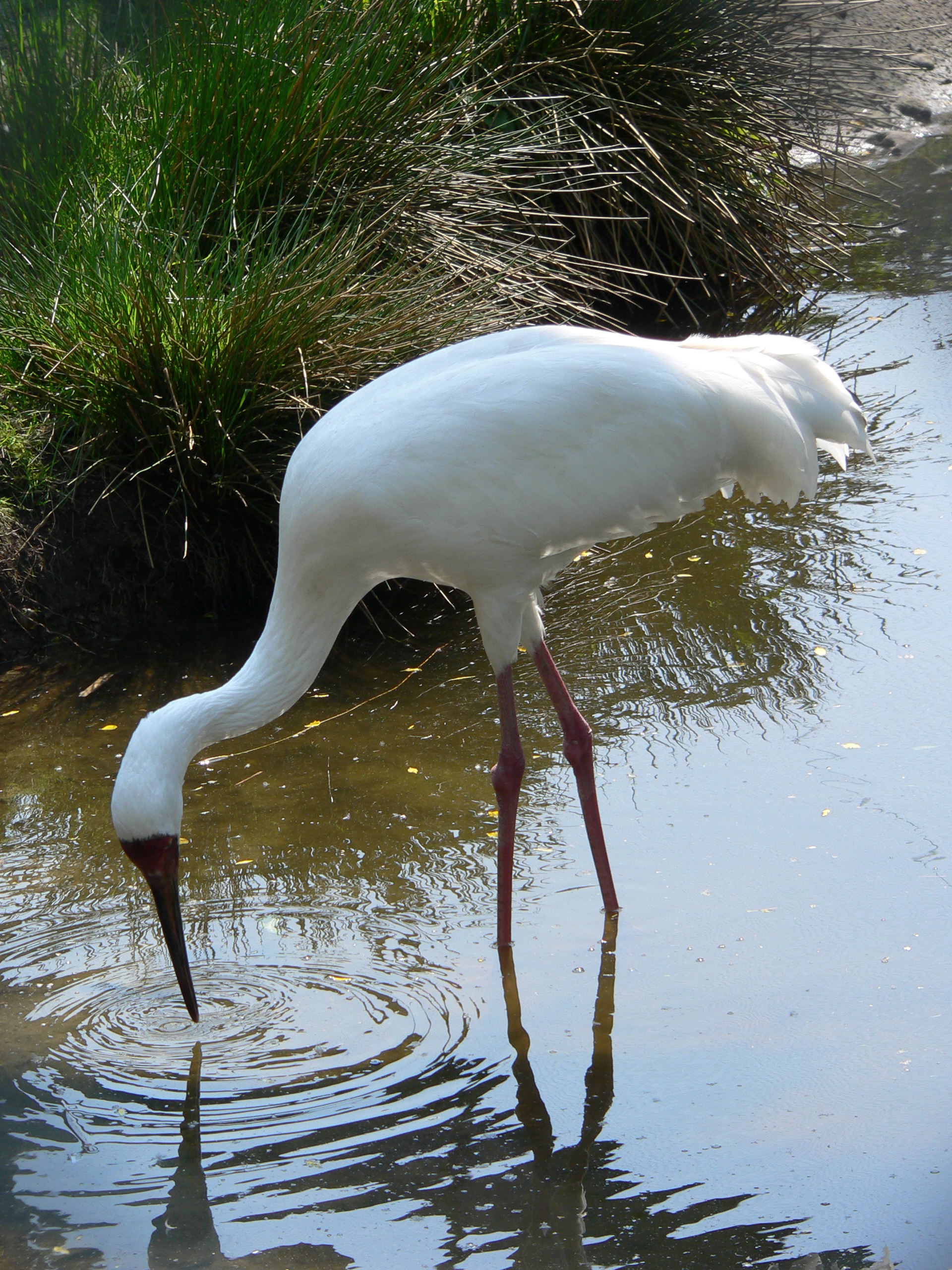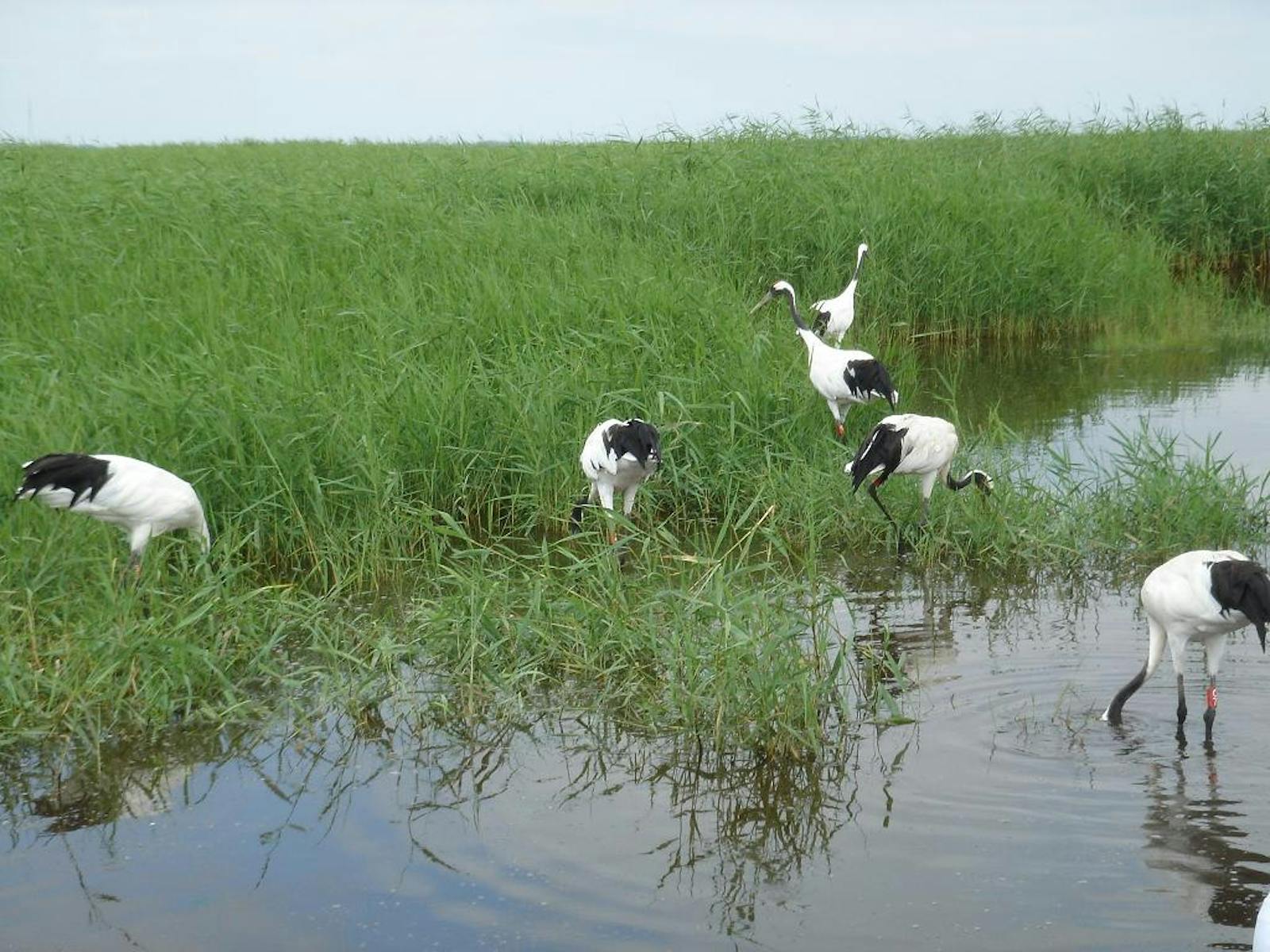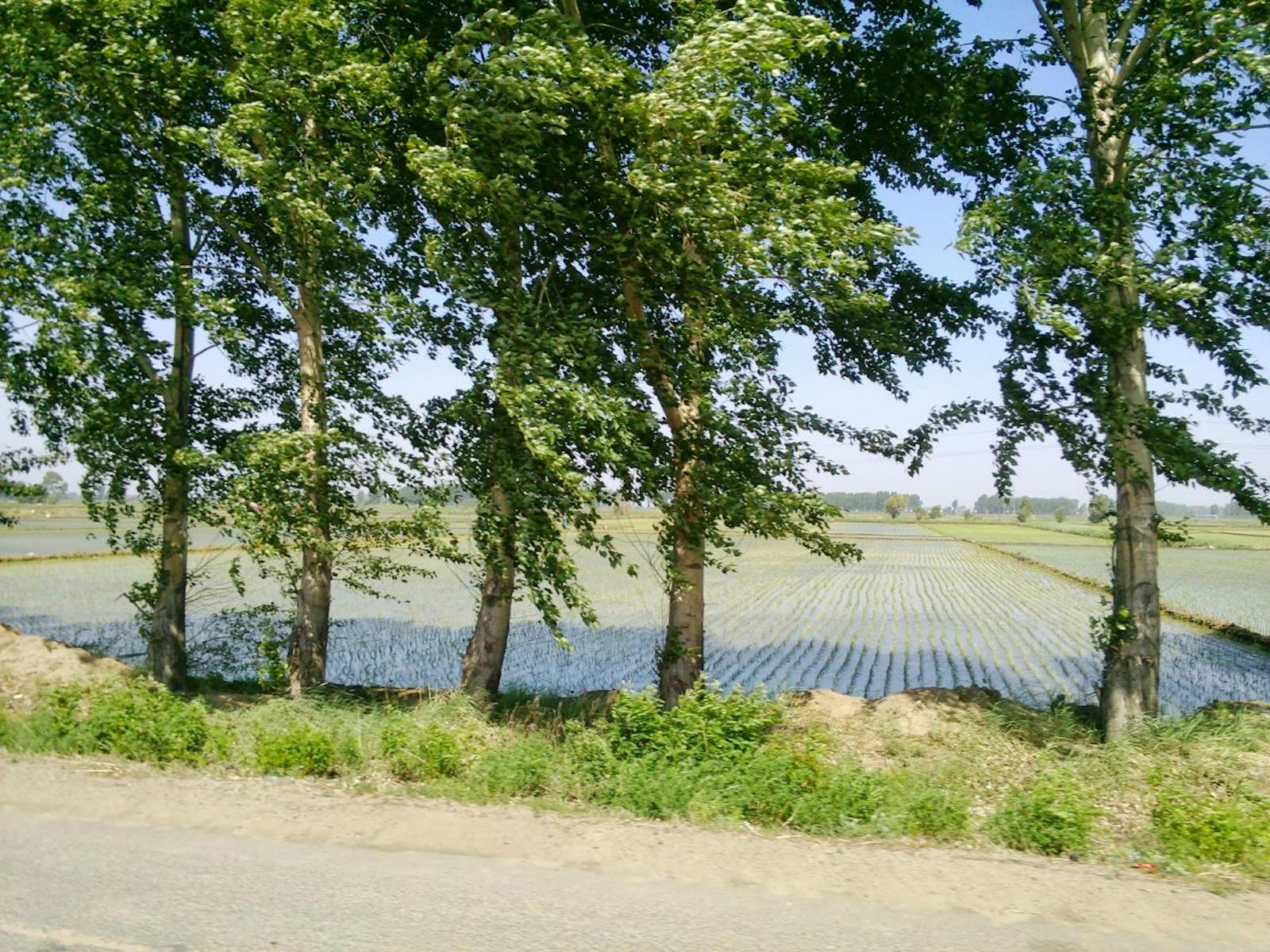Nenjiang River Grassland
The ecoregion’s land area is provided in units of 1,000 hectares. The conservation target is the Global Safety Net (GSN1) area for the given ecoregion. The protection level indicates the percentage of the GSN goal that is currently protected on a scale of 0-10. N/A means data is not available at this time.
Bioregion: Mongolian Grasslands, Alpine Meadows & Forest Steppe (PA44)
Realm: Eastern Eurasia
Ecoregion Size (1000 ha):
2,325
Ecoregion ID:
743
Conservation Target:
10%
Protection Level:
9
States: China
The Nenjiang River originates in the Khingan mountain range, near the eastern end of the Mongolian Plateau, then flows to the lowlands of central Manchuria in northeastern China. In spring and early summer, as the Nenjiang River goes into spate, it rises to inundate grasslands of the Songhua-Nenjiang plain.
The resulting landscape is a mosaic of seasonally flooded grassland, shallow, reed-filled lakes, river channels, and old river courses undergoing ecological succession to grassland. The Nenjiang River grassland provides migratory passage and summer breeding habitat to six of the world’s fifteen crane species, including more than 95% of all the critically endangered Siberian cranes.
Potential vegetation of the Nenjiang River basin is an ecologically distinctive conifer swamp forest interspersed with meadows of tufted reed grasses that are adapted to grow in flooded soils. This plant community also includes sedges in the genus Scirpus, which are an important food source for the Siberian cranes that stage here during spring. Lakes are often filled or lined at their margins by the salt-tolerant reed Phragmites communis.

The flagship species of the Nenjiang River Grassland ecoregion is the Siberian crane. Image credit: BS Thurner Hof, Creative Commons
More than 300 bird species have been recorded in this ecoregion, including six of the world’s fifteen crane species. Red-crowned crane, white-naped crane, common crane, and demoiselle crane breed here, while Siberian crane and hooded crane stage prior to flying to their breeding sites in Siberia. Other rare water birds that breed in the Nenjiang River grasslands are white stork, black stork, Oriental white Ibis, Mandarin duck, and white spoonbill. The Nenjiang wetlands are important for crane research and also attract much popular attention because the crane is revered in China as a symbol for longevity.
Two nature reserves within this ecoregion, Zhalong (2,100 km2) and Jilin Momoge (1,440 km2), protect the remaining wetland habitat.
Zhalong National Nature Reserve, also a Ramsar Wetland, includes permanent and seasonal freshwater marshes, numerous shallow lakes and ponds, and hundreds of square kilometers of Phragmites reed beds. Most natural lakes are permanent and contain freshwater, some are seasonal or saline, and the entire complex floods every year during the spring and summer rainy season. Besides its importance for migratory water birds, Zhalong serves as a breeding site for the near-threatened marsh grassbird, a species of Old World warbler. Zhalong also supports more than 40 fish species and several frog species, including the Siberian wood frog Rana amurensis, which is protected in China.
Jilin Momoge National Nature Reserve—“the kidney of west Jilin"—is located in a desert-grassland transition zone with basin wetlands, shallow lakes, rivers, and temperate meadow habitats. Practically all of the world’s 4,000 Siberian cranes stage here on their migration, and each year more than 100,000 water birds visit. Great bustard, a large terrestrial bird, also breeds here. Beyond bird habitat, Jilin Momoge performs ecosystem functions that include support to local fisheries, groundwater recharge, flood water storage, and local climate regulation.1 In 2013, Jilin Momoge became a Ramsar Wetland of International Importance.
Wetland habitat of the Nenjiang River grassland—protected or not—has long been affected by overfishing, agricultural encroachment, and reed harvesting. Traditional exploitative activities like hunting and egg collection are now well controlled. Salinization occurs when too much water is diverted for irrigation to flush out salt deposits. Petroleum and natural gas are extracted and refined in this ecoregion, so pollution is an obvious concern.
During their passage through the Nenjiang Basin, Siberian cranes feed on a species of sedge called Scirpus planiculmis. Habitat restoration efforts that involve controlled flooding need to achieve the correct water depth in order for the sedge grow well. If the water is too shallow or too deep, the Scirpus will decline, to the detriment of the Siberian Crane population.
Priority conservation actions for the next decade are to: 1) manage the ecological impact of oil and gas extraction on wetland habitat; 2) manage water flow to sustain crane habitat; and 3) to develop tourism with a view to educating visitors without disturbing the birds.
Citations
- Carpenter, C. 2000. Eastern Asia: Northern China. https://www.worldwildlife.org/ecoregions/pa0903. Accessed December 2018.
- International Crane Foundation. 2013. Momoge National Nature Reserve named Wetland of International Importance. https://www.savingcranes.org/jilin-momoge-national-nature-reserve-named-wetland-of-international-importance. Accessed December 2018.
- Jiang H., Wen Y., Zou L., Wang Z., He C., Zou C. 2016. The effects of a wetland restoration project on the Siberian crane (Grus leucogeranus) population and stopover habitat in Momoge National Nature Reserve, China. Ecological Engineering 96: 170-7.




